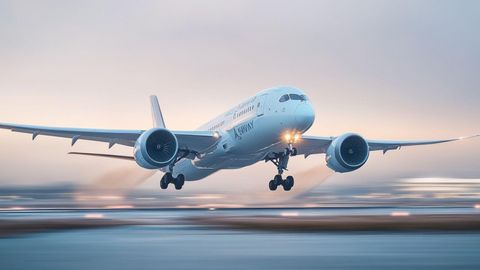Analyses & Studies
Modernizing Aviation Infrastructure: A Dual Imperative

As global travel rebounds and expectations soar, the aviation industry faces a pivotal challenge: modernizing aging infrastructure to meet the demands of the 21st century.
Both airlines and airports are grappling with legacy systems and facilities that were never designed for today’s passenger volumes, technological capabilities, or operational complexities. The result is a sweeping transformation across the sector—one that touches everything from cloud-based IT platforms to billion-dollar terminal redevelopments.
Airlines: Rebuilding the Digital Backbone
Airlines operate on infrastructure that, in many cases, is decades old. Outdated aircraft systems, fragmented data environments, and legacy IT platforms have created operational inefficiencies, service disruptions, and rising maintenance costs. These issues are no longer just technical—they’re strategic liabilities.
To address this, airlines are investing heavily in modernization. Cloud-based, integrated platforms are replacing siloed systems, enabling real-time decision-making and cross-functional interoperability across flight operations, maintenance, and customer service. AI-powered tools are being deployed to monitor equipment health, anticipate disruptions, and optimize scheduling—shifting operations from reactive to proactive.
Passenger experience is also a major focus. Biometric screening, digital check-in kiosks, and real-time notifications are transforming the journey into a seamless, touchless experience. Today’s travelers expect more than safe transportation—they demand digital ease, personalization, and convenience.
Modernization is not just about technology; it’s about mindset. Successful airline transformations are driven by enterprise-wide digital strategies, cross-functional collaboration, and leadership that views innovation as an ongoing commitment.
Airports: Reimagining the Physical Gateway
While airlines modernize their digital core, airports are rebuilding their physical foundations. Across North America, terminals, runways, and mechanical systems are being overhauled to accommodate larger aircraft, higher passenger volumes, and smarter technologies.
Projects like JFK’s $19 billion transformation, DFW’s $4 billion Terminal F expansion, and SAN’s $2.6 billion Terminal 1 replacement exemplify this shift. These developments prioritize open-concept designs, smart systems integration, and sustainability—creating modular, flexible terminals that can scale with future demand.
Funding these capital programs requires strategic financial planning. Airports are leveraging public-private partnerships (P3s), passenger facility charges (PFCs), airport revenue bonds, and long-term concessions to finance redevelopment. Notable examples like LaGuardia’s Terminal B and JFK’s Terminal One have set national precedents in balancing public oversight with private-sector innovation.
A Shared Vision for the Future
Despite their different roles, airlines and airports share a common goal: building resilient, efficient, and future-ready infrastructure. Whether it’s a cloud-based operations platform or a reimagined terminal, modernization is no longer optional—it’s essential.
As the industry faces rising fuel costs, sustainability pressures, and evolving passenger behaviors, infrastructure becomes more than a support system—it becomes a strategic platform. Those who invest decisively today will be best positioned to lead tomorrow, earning the trust of passengers, employees, and investors in a competitive and rapidly changing marketplace.
SOURCE: SIA-PARTNERS


